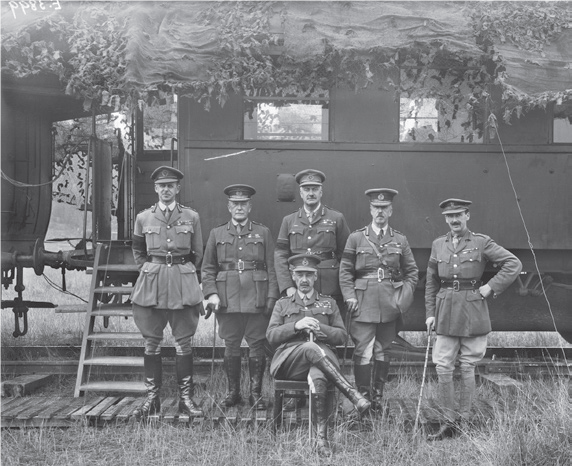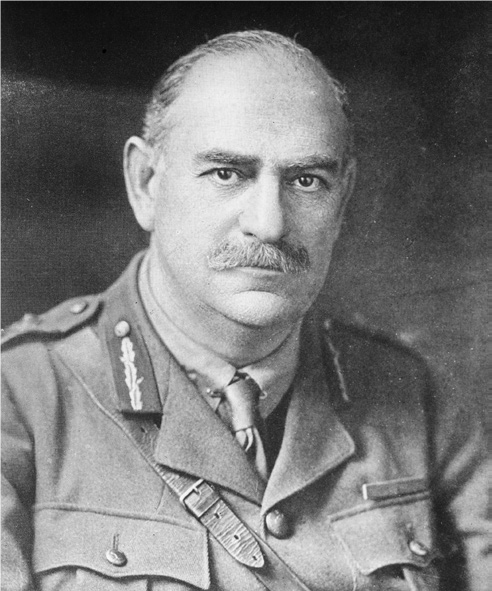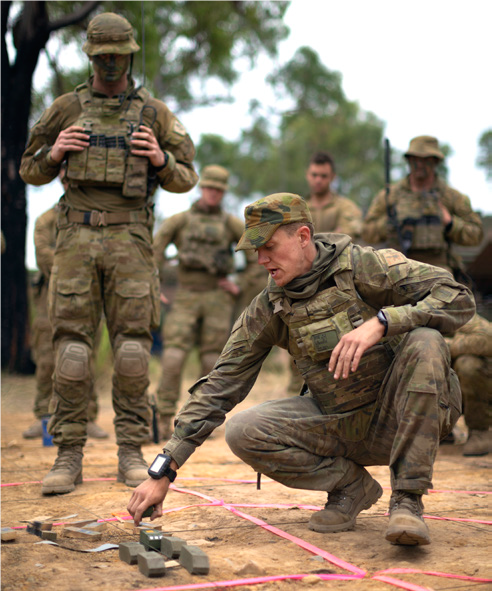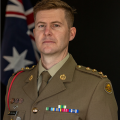A note from The Cove Team: In lead up to Remembrance Day this year, The Cove is doing a mini history theme, with a specific focus on looking back at the lessons learnt from the past to help shape our current and future preparation. To start the theme we have a series first published by Combat Training Centre - Live, that looks at a variety of enduring aspects of war.
Battle procedure, a term often used interchangeably with battle preparation, is generally articulated as preliminary and concurrent actions undertaken by a force to save time and set the conditions for success. Thorough battle procedure should be conducted before, during and after an engagement to facilitate decision superiority and to influence the outcome of a battle. Due to the extensive, yet task specific nature of battle procedure, components vary in importance. It is to be acknowledged that modernisation evolves the character of war, yet the physical, technical and critical aspects of lessons learnt, reconnaissance, and rehearsals remain enduring. The Battle of Amiens in 1918, and the fall of France in 1940 are two historical examples which support this.
 The Battle of Amiens was one of the most catastrophic defeats of the German forces during WW1. It morally dislocated the German Army and triggered the ‘100 days to victory’ for the Allies in 1918.[1] It was here at Amiens that Sir Henry Rawlinson of the British 4th Army and Australian Corps commander John Monash orchestrated a devastating attack on the German forces. The German forces culminated at Amiens following their massive but largely unsuccessful spring offensive, leaving them dislocated from their lines of communication, depleted, and without rest. Refusing to relent ground, the German High Command reinforced Amiens with eight divisions of second line troops with little-to-no battle experience, training or equipment.[2]
The Battle of Amiens was one of the most catastrophic defeats of the German forces during WW1. It morally dislocated the German Army and triggered the ‘100 days to victory’ for the Allies in 1918.[1] It was here at Amiens that Sir Henry Rawlinson of the British 4th Army and Australian Corps commander John Monash orchestrated a devastating attack on the German forces. The German forces culminated at Amiens following their massive but largely unsuccessful spring offensive, leaving them dislocated from their lines of communication, depleted, and without rest. Refusing to relent ground, the German High Command reinforced Amiens with eight divisions of second line troops with little-to-no battle experience, training or equipment.[2]
 The Allies recognised an opportunity and launched an offensive to exploit the German vulnerabilities. Relying heavily on secrecy, the Allies pre-positioned personnel and conducted reconnaissance to identify targetable flaws in the German defences, along with the majority of their artillery positions.[3] Australian and Canadian forces were experienced fighters and were well-versed in the capability and limitations of armour. The Allies leveraged their experiences gained from Hamel, creating one of the first, albeit rudimentary, virtual simulated training activities.[4] Using makeshift armour assets and generating a detailed plan to integrate artillery, the commanders and teams were able to practice effective combined arms manoeuvres. Monash and Rawlinson rehearsed different movement styles, eventually leapfrogging their infantry and armour, under artillery and air support, to the German front lines. The defeat of the German forces and the success of the Allied action can be directly attributed to the efficacy of this battle procedure.
The Allies recognised an opportunity and launched an offensive to exploit the German vulnerabilities. Relying heavily on secrecy, the Allies pre-positioned personnel and conducted reconnaissance to identify targetable flaws in the German defences, along with the majority of their artillery positions.[3] Australian and Canadian forces were experienced fighters and were well-versed in the capability and limitations of armour. The Allies leveraged their experiences gained from Hamel, creating one of the first, albeit rudimentary, virtual simulated training activities.[4] Using makeshift armour assets and generating a detailed plan to integrate artillery, the commanders and teams were able to practice effective combined arms manoeuvres. Monash and Rawlinson rehearsed different movement styles, eventually leapfrogging their infantry and armour, under artillery and air support, to the German front lines. The defeat of the German forces and the success of the Allied action can be directly attributed to the efficacy of this battle procedure.
In May 1940,22 years after the cessation of WW1, German forces invaded Belgium. The neutral Belgian forces were vastly under prepared for the invasion, relying on a native reserve force which was postured for defence on the basis of German WW1 offensive manoeuvre.[5] The German occupation of Belgium placed them in a strategically significant position, dominating the northern European front and placing them within striking distance of France and Great Britain. As the Allies raced to Belgium to halt the German advance, they intercepted the initial German plan, requiring the German forces to adopt an alternate course of action. The Allies considered this an early victory and as the newer Allied tanks outnumbered the German forces by almost two to one, the Allies were confident in their position. Yet the Germans, despite having older capabilities, outmanoeuvred the Allied forces en-route to France.
The Germans' pre-war rehearsals proved and hardened their communications, allowing them to reconsolidate dislocated forces and maintain pressure during their offensive. They created detailed SOPs for combined arms team manoeuvre, which they rehearsed as a matter of course.[6] The Germans generated tempo during their advance through the use of aerial reconnaissance, identifying maintenance and resupply points along with Allied defensive positions. Capitalising on this momentum, the Germans exploited the Allies poor understanding of the effectiveness of tanks in a combined arms environment. Having adapted from WW1, the Germans massed firepower and overwhelmed the slow-to-react Allied force.[7] The Allied communications were archaic, often taking up to 48 hours for commands to arrive at the executive unit.[8] On the other hand, the German forces generated tempo through the forward positioning of their command and a common understanding of their SOPs, giving them the ability to exploit fleeting opportunities.[9] The Germans' armour, infantry, and air support combined, flanked the Allied positions and in just six weeks France surrendered.[10]
Both these case studies reflect that battle procedure is not only an essential precursor to battle, but one which, at times, is often overlooked. The efficacy of each force’s battle procedure had significant impacts on the outcome of the battles; especially noting the requirement to quickly adjust plans or exploit fleeting opportunities. Whilst the importance of various readiness or sustainability components of battle procedure vary greatly between tasks, the ability to adopt lessons learnt, prioritise reconnaissance, and conduct rehearsals is always critical.[11]
The Allies at Amiens adapted their tactics, techniques, and procedures (TTPs) following lessons learnt from previous battles and they conducted rehearsals during the preparatory stages of the battle specifically designed for the composition of Allied forces. They conducted Rehearsal of Concept (ROC) drills, as well as small scale combined arms rehearsals, using the limited assets they had on hand. These rehearsals enabled the soldiers and commanders on the ground to anticipate and react swiftly to enemy action, gaining time and enabling decision superiority for the Allied commanders.
The ingenuity of the Allies at Amiens to integrate simulated tanks into their rehearsals when armour assets were unavailable enabled Allied soldiers to understand not only their position in relation to the armour in all stages of the battle, but also their commander's intent. This generated momentum and allowed the exploitation of multiple fleeting opportunities at the lowest level. The addition of rehearsing small-scale movement techniques, designed to be part of a larger force, enabled the Allies to generate tempo, overwhelming and outmanoeuvring the German forces. The leapfrogging and integration of infantry and armour assets enabled the Allies to generate and maintain tempo, outpacing the German decision cycle.
Recurring maintenance problems in Allied tanks caused friction; however, the Allies’ rehearsals, concurrent planning, and coordination enabled them to continue the battle by adjusting their manoeuvre to fit the changing situation. Finally, early aerial surveillance enabled the Allies to identify targetable vulnerabilities; namely the majority of the German gun positions prior to the battle. The Allies then advanced under accurate H-hour fires, which targeted and suppressed the German artillery positions. These limited aspects of battle procedure enabled the Allies to achieve decision superiority over the Germans.
In 1940, early interdiction of the German battle plan made the Allies over confident, which resulted in the Allies adopting a single course of action and neglecting to rehearse contingencies. Unaware of the German TTPs, the Allies retained their original doctrine from WW1 and in the absence of orders, reverted to defensive techniques which handed the initiative to the German forces.[12] Although forward of their lines of communication and supply, the German reconnaissance generated tempo through the identification of resupply points, expediting the maintenance and refuelling of the tanks. The German rehearsals not only enabled them to initiate a successful alternate course of action, but also allowed them to test and prove their communications. This preparation enhanced the delivery of orders and battlefield commentary, enabling the tactical commander to visualise the battlespace and react much quicker than the Allies.[13] The decision superiority generated by these actions enabled the German forces to mass firepower and outmanoeuvre the underprepared Allied forces.[14]
It was the battle procedure the Germans conducted throughout the offensive that led them to a speedy victory.[15] The evolution of SOPs for combined arms teams and incorporating this into training enabled subordinate elements to take the initiative and outmanoeuvre the Allied forces; generating decision superiority for the German command. The German forces adapted their training from their lessons learnt through WW1 , focussing their rehearsals on generating tempo and overwhelming Allied forces. The generation of tempo through reconnaissance was well understood by the Germans, with the Luftwaffe flying nearly double the sorties of the French forces, thus enabling recon pull and generating further decision superiority.[16]
Sources of learning and adaption in the ADF include the After Action Review, Post Activity Reporting, and Operational Analysis to name but a few. The information drawn from these sources is recorded and made readily available through publications such as the CTC Trends Report and CAL’s Smart Soldier. This information is used to change or develop SOPs and TTPs, which in turn informs Reality Based Training, Mission Specific Training, and force generation training and preparation more broadly. In line with this, the ADF provides live, virtual, and constructive environments to better prepare forces for any number of contingencies. Historical events are still relevant in identifying best practice and informing new learning. Current trends, and the examples drawn from The Battle of Amiens in 1918 and the fall of France in 1940, denote the effects of individual and team preparation, decentralisation of command and control, and the need for thorough reconnaissance and sustainment.[17]
Trends Reports also highlight that ROC drills, along with rehearsals, need to be mission specific in order to be relevant and test potential friction points.[18] While a well-rehearsed and tactically-sound force is able to test and adjust post-H, the effect that thorough battle procedure has on a force’s ability to create opportunities in battle should not be ignored. As the historical case studies demonstrate, failure to properly implement battle procedure, both with regard to forward planning and learning and adaption, can negatively impact mission outcomes. As battle procedure incorporates numerous actions, commanders need to weigh the importance of each action and the disparate effects it generates. A contemporary example is the frequent lack of emphasis placed on the Digital Theatre Gateway, a key element in modern battle procedure. Digital Theatre Gateways enable a force to test and prove not only their ability to communicate effectively, but also by testing and rehearsing during the grouping/re-grouping and initial entry to theatre stages, establishes a baseline for reporting, battle-tracking and the general serviceability of critical capabilities.

The Australian Army has recognised the need to modernise its approach to conflict, regardless of its character. Army in Motion encourages commands to allow processes to evolve with current and future conflict, blending into the concept of Accelerated Warfare. As the Australian Army continues modernisation efforts, there is an exponential requirement for technical competence in a digitally enhanced force. This requirement generates a training liability due to the ever-changing nature of digitalisation. It also adds modern complexity to historically standard preparations through the inclusion of a digital ‘handshake’ before a modern force commences an activity; by way of the Digital Theatre Gateway. Being Ready Now means that effective battle procedure is cyclical, increasing and decreasing in intensity to meet specific targets or outcomes. Well planned and executed battle procedure enables good decision-making. The use of simulation, reflection, and assessment can be put to good effect in terms of training for real-world outcomes, demonstrating how adaptive training and adaptive soldiering in barracks links with good battle procedure. Effective battle procedure on an exercise or on operations includes incorporating lessons learnt, thorough reconnaissance, mission-specific ROC drill and rehearsals, which in turn will enable decision superiority and set conditions for mission success.
This article was originally published in the CTC Live 2020 Fight to Win paper.









